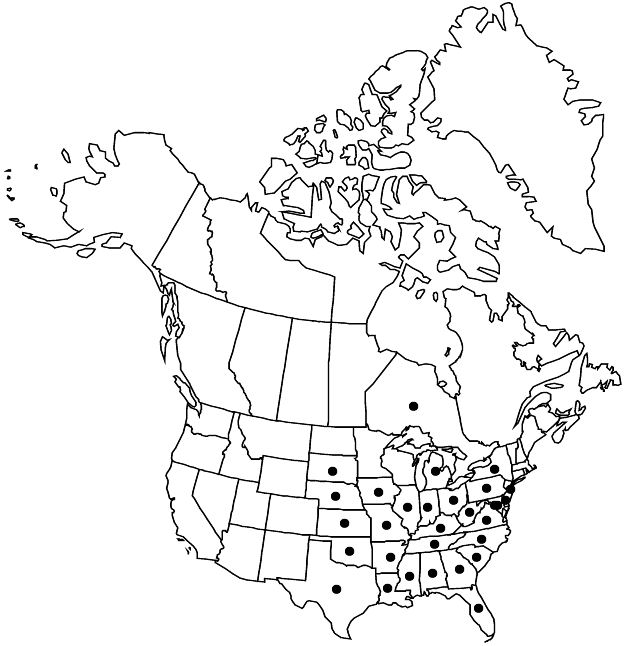Vitis vulpina
Sp. Pl. 1: 203. 1753.
Plants moderate to high climbing, sparsely branched. Branches: bark exfoliating in shreds; nodal diaphragms 1–2.5 mm thick; branchlets gray to green or brown, if purplish only on one side, terete, glabrous, growing tips not enveloped by unfolding leaves, glabrous or sparsely hairy; tendrils along length of branchlets, persistent, branched, tendrils (or inflorescences) at only 2 consecutive nodes; nodes not red-banded. Leaves: stipules 1.5–3 mm; petiole ± equaling blade; blade cordate, (5–)9–18 cm, usually unlobed or shallowly 3-lobed, sometimes deeply lobed on ground shoots, apex acute to short acuminate, abaxial surface not glaucous, glabrous, visible, veins and vein axils sometimes hirtellous, adaxial surface usually glabrous, sometimes sparsely hirtellous. Inflorescences 9–19 cm. Flowers functionally unisexual. Berries black, usually not, sometimes very slightly, glaucous, globose, 8–12 mm diam., skin separating from pulp; lenticels absent. 2n = 38.
Phenology: Flowering May; fruiting Jul–Aug.
Habitat: Upland forests, floodplain forests, woodland borders, prairies, fencerows, thickets, roadsides.
Elevation: 0–2000 m.
Distribution

Ont., Ala., Ark., Del., D.C., Fla., Ga., Ill., Ind., Iowa, Kans., Ky., La., Md., Mich., Miss., Mo., Nebr., N.J., N.Y., N.C., Ohio, Okla., Pa., S.C., S.Dak., Tenn., Tex., Va., W.Va.
Discussion
Selected References
None.